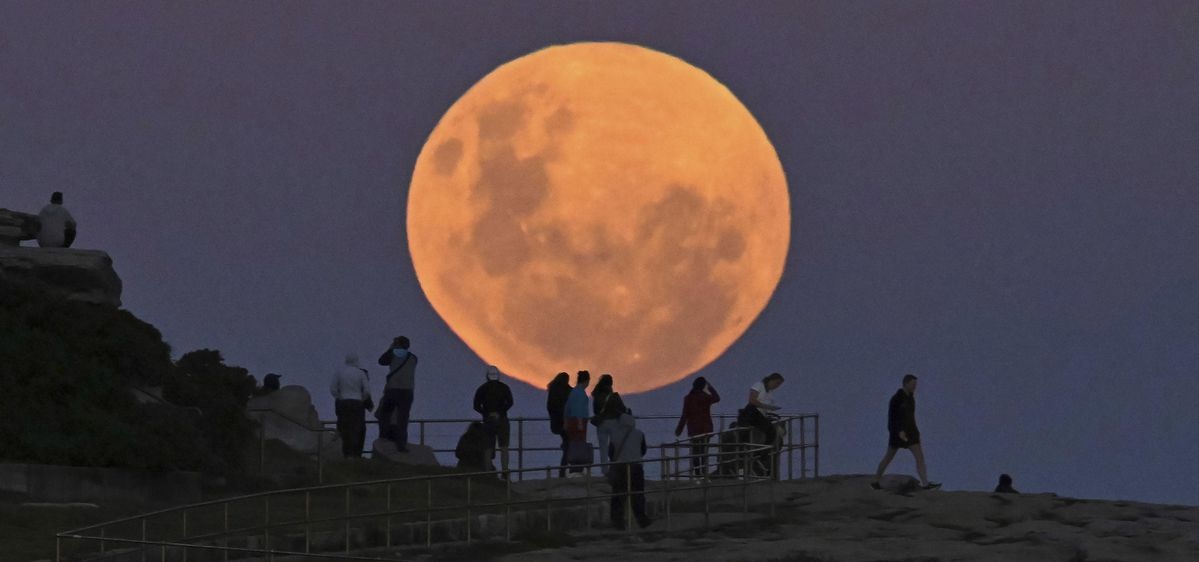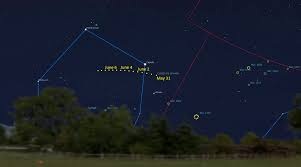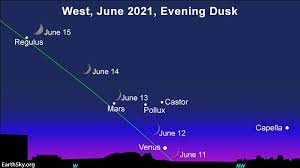That each Monday, I highlight the celestial peaks for the coming week during the northern hemisphere (mid-northern latitudes), but make sure to check out my main feed for more in-depth articles on stargazing, astronomy, eclipses, and more. This is all about the “Super Strawberries Moon” this week. It’s the first, biggest, and brightest thunderstorm of the summer, and it’s also the lowest-hanging, so it would have an enormous influence. On Thursday, before it rises in the east. Take a few nights before that to look for bright Venus in the west after sunset, and also some Mars as it crosses through the Beehive Cluster; it will be directly in front of the starry sight on Wednesday, but if it’s clear, get clients eyes on any night either side if it’s clear—stargazers must take their chances.
After dark tonight, look to the west for Venus, which will be around 5o from Pollux, was one Gemini’s two brilliant stars (the other being Castor). To see Venus before it sinks just after sunset, you’ll have to be quick. Look for Venus to move closer to Castor and establish a straight line with the “twins” later this week. The stunning sight of the red planet among the 60 or so bright stars of the Beehive Cluster will be visible low in the west-northwest night sky tonight after dark. Also known as M44 and Praesepe (Latin for “manger”). From less-than-dark metropolitan skies, a collection of stars about 580 light years away in the constellation of Cancer, the crab, can be seen behind Mars with binoculars.
The fourth and final “supermoon” of 2021 shall shine in the east as a chocolatey brown orb tonight at dusk. Although the moon is officially full at 18:40 UTC, you should catch it at moonrise where you are by using a moon calculator; moonrise in London is at 9:38 p.m., 8:54 p.m. in New York, and 8:36 p.m. in Los Angeles. The celestial mechanics are right this month for a spectacular summer performance, occurring around 20 minutes after sunset. To observe our satellite burst into the scene, wait about 10-20 minutes after the official moonrise time. Around midnight, a waning “Super Strawberry Moon” will rise above the eastern horizon, only 4° from Saturn in Capricorn. With Jupiter just beyond and rising little after, you might have to stay up late to see this one.
Do you know what the “Northern Crown” is? Corona Borealis, a constellation of seven brilliant stars between Boötes and Hercules, is a little-known but very stunning constellation. In June, it’s exactly above. It’s a crescent-shaped cluster of stars that’s almost equidistant from the bright summer stars Vega in the northeast and orangey Arcturus above. The times and dates listed are for latitudes in the mid-northern hemisphere. Consult online planetariums like Stellarium and The Sky Live for the most up-to-date location-specific information.







